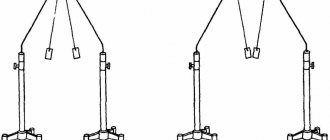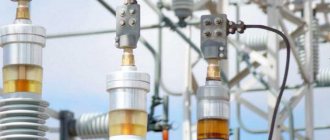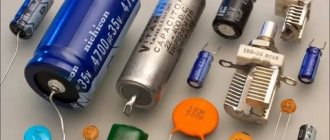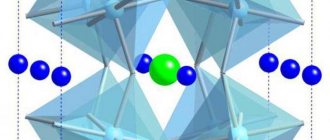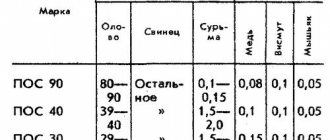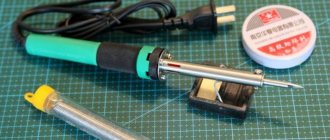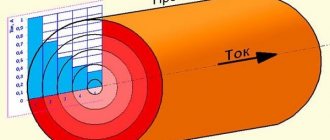3.9
Average rating: 3.9
Total ratings received: 846.
3.9
Average rating: 3.9
Total ratings received: 846.
Emptiness is how the word vacuum is translated from Latin. Vacuum is usually called a space in which there is gas, the pressure of which is hundreds, and maybe thousands of times lower than atmospheric pressure. On our planet, a vacuum is created artificially, since such a state is impossible under natural conditions.
Types of vacuum
How does electric current behave in a vacuum? Like any current, a current in a vacuum appears in the presence of a source with free charged particles.
What particles create an electric current in a vacuum? To create a vacuum in any closed vessel, it is necessary to pump out the gas from it. This is most often done using a vacuum pump. This is a device that is necessary to pump out gas or steam to the pressure required for the experiment.
There are four types of vacuum: low vacuum, medium vacuum, high vacuum and ultra-high vacuum.
Rice. 1. Vacuum characteristics
Basic Concepts
At first glance, it seems that current and vacuum are incompatible concepts. After all, in a dielectric, the ordered movement of charges is impossible. But in reality this is not entirely true. To understand why conductivity occurs in a vacuum, it is necessary to study the nature of the generation of current and what constitutes a gas space with a pressure below atmospheric.
In any body there are particles. They can be in a free state or bound to an atom. Both have a certain charge. The former move chaotically in the body, compensating for the movement of charges. But if a force is applied to the material, which causes the charge carriers to move in one direction, then an electric current will arise.
Its force is determined by the number of particles passing through the cross section of the body per unit time. It is measured in amperes. Charge carriers can be:
- protons;
- ions;
- electrons;
- holes.
Any physical body consists of molecules. They are formed by atoms around which electrons rotate. During a chemical reaction or external influence of electromagnetic fields, electrons move. They are knocked out or attracted by another body that lacks elementary particles. The result is a current. Its direction coincides with the field strength that forms the movement of particles and creates electricity.
A vacuum, by definition, is a space in which there is no matter. Physicists call it a medium filled with gas at a pressure less than atmospheric. Air consists of molecules that, moving chaotically, collide with each other and various obstacles. The distance that a molecule travels after impact is called the mean free path.
If air is enclosed in a vessel and air is pumped out of it, then a moment will come at which the molecules will not experience a collision. That is, their free range will be determined by the size of the container. Thus, even though a vacuum has been created in the vessel, a certain number of molecules will remain in the medium.
It is almost impossible to pump out all the particles . A so-called deep vacuum can only form, in which the particle encounters virtually no resistance to movement.
It follows that with smaller vessel sizes, a vacuum is created at a higher gas pressure than in a large closed container.
Physicists explained this phenomenon by drawing an analogy with the evaporation of water. Just as when water is heated, its molecules are emitted, so heated metal emits electrons. As a result, an electron cloud appears.
In order for electrical conductivity to appear, a beam of electrons is created. In order for a directed beam to appear, a hole is made in the metal to which the accelerated electrons go.
For thermionic current there is such a thing as saturation force . It is determined by the maximum value. In this case, all electrons emitted from the surface enter the cloud and reach the opposite plate - the anode. The saturation density is found using the Richardson-Dashman formula, obtained on the basis of quantum statistics: jн = C * T * 2 * eA/(kT). Here A is the work function, T is the heating temperature, C is a reference value.
It should be noted that with increasing temperature, the number of charge carriers whose kinetic energy of thermal motion is greater than the work function increases, and the process of thermionic emission becomes more noticeable.
Electric current in a vacuum
Current in a vacuum cannot exist independently, since vacuum is a dielectric. In this case, a current can be created using thermionic emission. Thermionic emission is a phenomenon in which electrons escape from metals when heated. Such electrons are called thermionic electrons, and the entire body is an emitter.
This phenomenon was first noticed by the American scientist Thomas Edison in 1879.
Rice. 2. Thermionic emission
Emission is divided into:
- secondary electron (knocking out by fast electrons);
- thermionic (evaporation of electrons from a hot cathode);
- photoelectronic (electrons are knocked out by light);
- electronic (knocking out with a strong field).
Electrons will be able to fly out of the metal if they have sufficient kinetic energy. It must be greater than the electron work function for a given metal. Electrons escaping from the cathode form an electron cloud. Half of them return to their original position. In the equilibrium state, the number of electrons emitted is equal to the number of electrons returned. The density of the electron cloud depends directly on the temperature (i.e., as the temperature rises, the density of the cloud becomes greater).
When the electrodes are connected to a source, an electric field arises between them. If the positive pole of the current source is connected to the anode (cold electrode), and the negative pole to the cathode (heated electrode), then the electric field strength will be directed towards the heated electrode.
General information
The concept of vacuum is similar to the word “emptiness”. In physics, it is understood as space that is freed from any substances. However, scientists believe that such a place cannot exist. They explain this by saying that even in the emptiest space there must be fluctuations. This was experimentally proven by Heinrich Casimir, who described the phenomenon in his notes.
He suggested that the vacuum is a “reservoir” in which a series of disturbances occur near absolute zero . His experience was as follows. The scientist took two charged plates and placed them between vacuum space. Under the influence of external photons, the conductors were attracted to each other. That is, a force, albeit weak, passed through space.
Therefore, in physics there is a special term - physical vacuum. It is understood as a closed space in which the pressure is several times lower compared to the gas environment. That is, its value has no effect and can be neglected. Since electricity is formed by the movement of elementary charge carriers, which are practically absent in a vacuum, it cannot be obtained by simply acting on the medium. Therefore, the only way to pass current through a void is to add charged particles to it.
In 1879, Edison, while studying the cause of filament burnout in incandescent lamps, discovered the formation of a dark coating near the anode terminal. The inventor explained this effect by saying that a discharge occurs inside the flask, as a result of which charged particles of coal dust are knocked out of the conductor. He suggested that if an additional electrode with a positive charge is introduced into the lamp, then these particles will be attracted to it.
This is how the effect of thermionic emission was discovered. In other words, the emission of charged particles when the conductor is heated to temperatures of 1500 - 2500 o C. At such values, electrons break bonds and are released. This phenomenon is similar to the evaporation of molecules from the surface of a liquid. It has found its application in vacuum electronic devices. For example, it is used in cathode ray tubes and lamp diodes.
Characteristics of the electron cloud
The electron cloud near the metal surface is described by formula (5). In expression (5), the number of quantum states in the phase volume element $dxdydzdp_xdp_ydp_z$ will be written as:
Then the number of electrons in the phase volume element will be equal to:
where $E_k=\frac{p^2}{2m_e}$. $p^2={p_x}^2+{p_y}^2+{p_z}^2$. The electron cloud concentration ($n_0$) near the metal surface can be found by sequentially integrating expression (7) over $dxdydz$ and then over $dp_xdp_ydp_z$, resulting in:
The average kinetic energy of electrons is:
What have we learned?
We learned briefly about electric current in a vacuum from this article. For it to exist in a vacuum, the presence of free charged particles is first necessary. The types of vacuum and their characteristics are also considered. The concept of thermionic emission is necessary to study. The information can be used to prepare a report and message in a physics lesson.
Previous
PhysicsFlat mirror - magnification and types
Next
PhysicsNewton's second law - formula, notation and definition briefly
Vacuum diode
The simplest device that uses the phenomenon of electricity generated by thermionic emission is a vacuum diode. Its operation is quite simple, and the device itself is one of the simplest devices. The main characteristic of a diode is the current-voltage dependence.
It has three sections: nonlinear, power-law, saturation. In the first, the current slowly increases with increasing voltage. This dependence is exponential. In the second interval, the change is described by the formula: I = G * U 3/2 where: G is conductivity, the reciprocal of resistance. The third section is characterized by the fact that as the voltage increases, the current value practically does not change. This is due to the fact that the number of electrons emitted from the conductor becomes constant at any given time.
The electronic device itself is a flask with two electrodes. A physical vacuum is created in the middle of the vessel. One electrode (cathode) is designed to emit electrons, and the other (anode) is designed to receive them. The cathode terminal consists of a filament that is heated by current and a long cylinder with a heater coil placed in it.
When the electrode is heated, thermionic emission occurs. The electrons leave the surface and create a cloud with an excess of negative charges. The surface of the output begins to charge positively . A certain number of particles with low speed fall on the cathode, but fast electrons overcome the barrier and move to the anode. If a forward bias is applied to the positive terminal, an accelerating field will arise, which further promotes electron transfer.
The result will be a constant current. An electric vacuum diode has an undeniable advantage over a semiconductor diode - the absence of reverse current. In addition, the device is able to withstand high voltages and ionizing radiation. But the device cannot be called energy efficient.
Most often, tungsten or a mixture of alkaline earth metal oxides are used as a thermal cathode. It should be noted that the main parameters of the diode include the slope of the current-voltage characteristic, the saturation current and the blocking voltage. The latter determines the value at which breakdown occurs - the appearance of a spark with an arc and an increase in current strength several times. That is, a violation of the strength of the vacuum.
